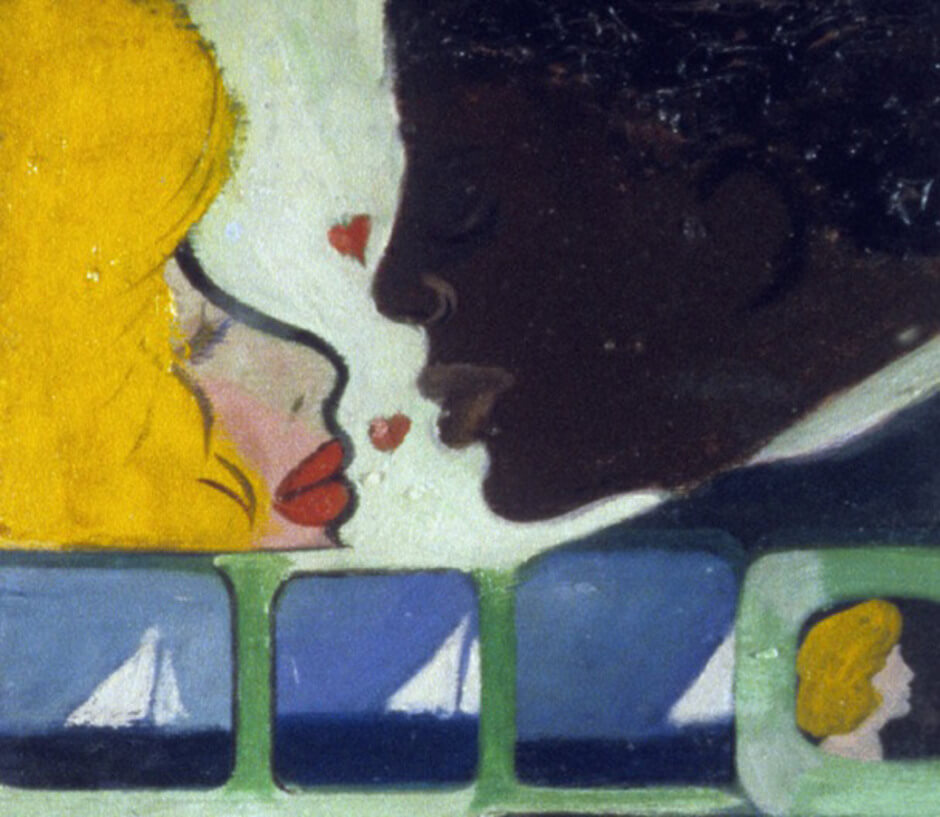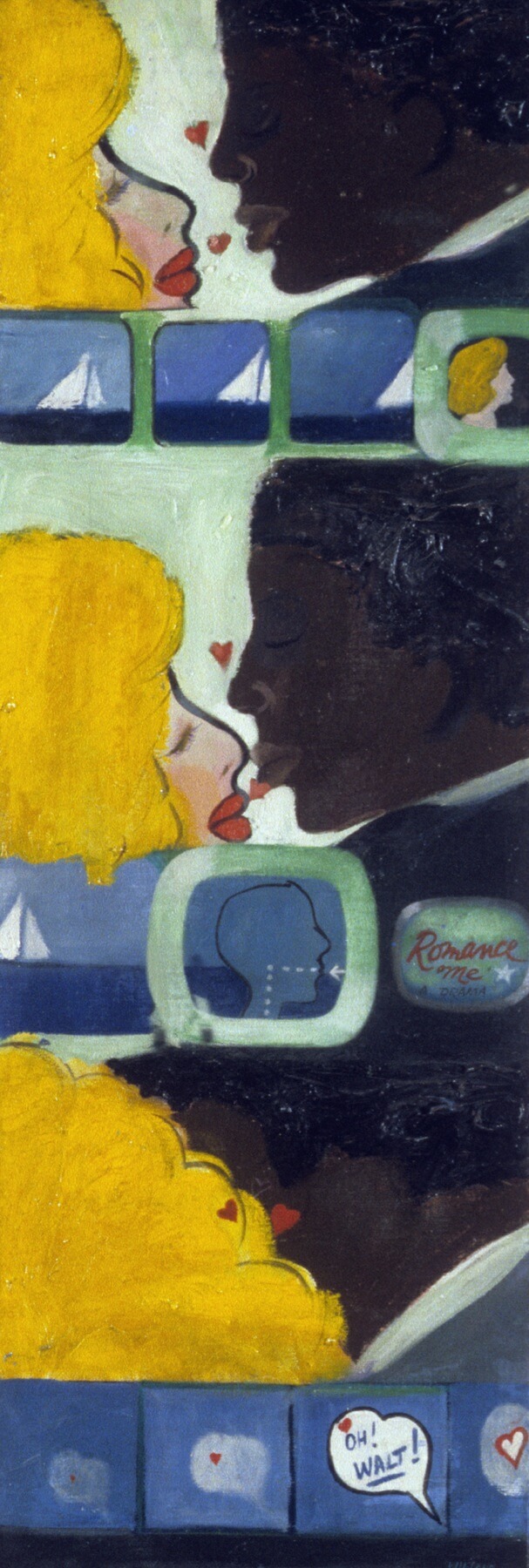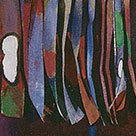First Integrated Film with a Short on Sailing 1963

Joyce Wieland, First Integrated Film with a Short on Sailing (detail), 1963
Oil on canvas, 66 x 22.7 cm
Private collection

Wieland paradoxically titles this painting a “film,” or rather two films. The feature film consists of three vertically stacked squares showing a white woman and a black man melting into a kiss, while running along the bottom of each of these squares is the short film—a horizontal sequence of little images, showing a sailboat, heads in profile, and speech balloons. The lovers are like comic-book figures, with faint strokes highlighting the closed eyes and pouting lips, and little red hearts bouncing between the two faces. Yet the simplicity and goofy charm of this image is deceptive, because the artwork is complex in its pictorial organization while dealing with a serious social issue.
Looking at this artwork, the viewer is easily reminded of Hollywood movies featuring scenes of heart-pounding kisses during which the music soars, the camera zooms in, and the lovers’ lips meet. The kiss signifies the reconciliation of conflict and misunderstanding. However, in 1963 there were no mainstream films or television programs showing romantic bliss between interracial couples, and likewise no possibility of a narrative climax based on a racially integrated union. Wieland’s “first integrated film” is a fiction that exists only in painted form, and one that serves as a reminder of the racism deeply embedded in North American pop culture. The words “Oh! Walt!” that appear in a free-floating speech balloon in the horizontal panel could be a reference to the entertainment empire headed by Walt Disney.
Wieland’s painting is formally radical in that the artist introduces a sense of narrative sequence and momentum that moves in two directions simultaneously. We follow one story from top to bottom even while our eyes zigzag from left to right. These are still images, and yet they are presented as if they were components of a multidirectional cinematic flow.

 About the Author
About the Author
 More Online Art Books
More Online Art Books
 Acknowledgements
Acknowledgements